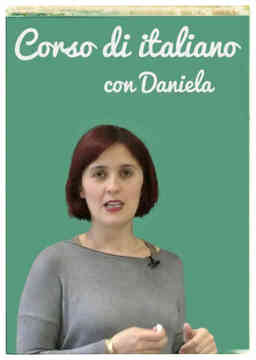









Difficulty:
 Beginner
Beginner
Italy
Enjoy another walk through the fields with pig brothers Piggeldy and Federico. This time Piggeldy wants to know what a letter is.
Difficulty:
 Beginner
Beginner
Italy
After you have filled your shopping cart, it's time to go to the checkout counter. Marika describes the different registers and the various ways to pay.
Difficulty:
 Beginner
Beginner
Italy
Marika provides the terminology you'll need if you shop online using an Italian website.
Difficulty:
 Beginner
Beginner
Italy
In this lesson, Marika explains, with examples from Yabla videos, two words that always puzzle learners: mica and manco. The first part is all about mica. Here's what you need to know!
Difficulty:
 Beginner
Beginner
Italy
"Manco" is a bit more complicated than "mica" because it's often used with irony. It's also used with the impersonal third person, making it rather tricky to translate. But remembering that it means neanche (not even) can help.
Difficulty:
 Beginner
Beginner
Italy
The word pure has several meanings, from "also" to "even," to "although." Marika explains them and gives us some examples in context.
Difficulty:
 Beginner
Beginner
Italy
Here's more about the popular word pure. It can express encouragement, resignation, or be superfluous. Pure is often truncated to pur when it combines with other particles to mean something particular.
Difficulty:
 Beginner
Beginner
Italy
Who doesn't love pasta? Marika talks about this extremely popular Italian food: the history, where it's produced, and how to cook it.
Difficulty:
 Beginner
Beginner
Italy
During a walk in the country, Federico explains what summer is to his little brother Piggeldy.
Difficulty:
 Beginner
Beginner
Italy
Marika divides the types of pasta into different categories and explains their characteristics, ranging from ingredients to shelf life, to cooking time, and consistency.
Difficulty:
 Beginner
Beginner
Italy
There are different kinds of flour used to make pasta. "Flour" is a generic term but it's not always accurate. Marika explains it all.
Difficulty:
 Beginner
Beginner
Italy
There is an amazing variety of fresh and dried pasta shapes and sizes in Italy, referred to as formati (shapes and sizes). Their names have to do with their surface (smooth, rough, grooved), their size, expressed with a suffix, such as -one, -etto, -ino, etc, and/or what they resemble. Marika makes some sense of the vast assortment of pasta found in Italian supermarkets.
Difficulty:
 Beginner
Beginner
Italy
Marika explains some terms related to the world of economics. In this first part, we learn terms like "demand" and "supply," as well as concepts such as "surplus" and "deficit."
Difficulty:
 Beginner
Beginner
Italy
In this second part, Marika teaches us more terms related to the world of economics. This time she provides a text that encompasses the words learned so far on this important topic.
Difficulty:
 Beginner
Beginner
Italy
In this video, we explore the most common terms related to international politics and relations between nations. Words like "diplomacy," "treaty," "sovereignty," and "alliance" will be explained with practical examples to help you easily incorporate them into your Italian conversations.
Are you sure you want to delete this comment? You will not be able to recover it.